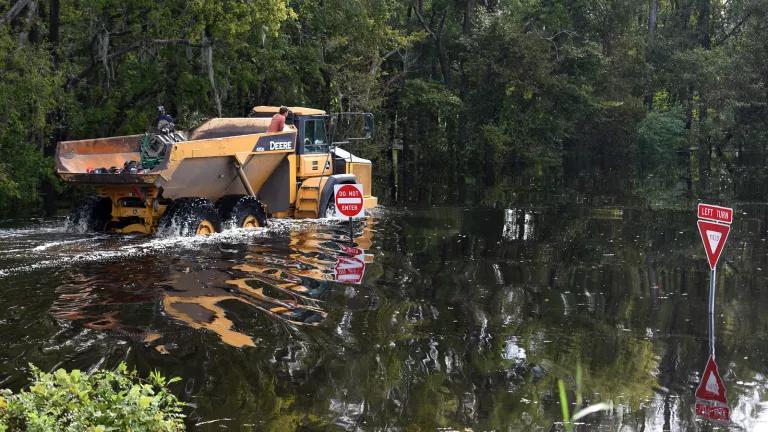FEMA Moves to Reform Flood Insurance Program
FEMA has asked for public input on a wide array of potential reforms to the National Flood Insurance Program (NFIP). If implemented, these suggested changes could transform the NFIP into the climate-informed flood program the nation desperately needs.

FEMA has asked for public input on a wide array of potential reforms to the National Flood Insurance Program (NFIP). If implemented, these suggested changes could transform the NFIP into the climate-informed flood program the nation desperately needs.
FEMA has taken this action directly in response to a petition filed by NRDC and the Association of State Floodplain Managers in early January. The petition requested the NFIP be updated to reduce harm to the millions of people and properties at increased risk of flooding due to climate change.
The NFIP, much more than an insurance program, is the nation’s primary mechanism for addressing and managing flood risk. The NFIP sets the floor for building and land-use decisions in flood-prone areas nationwide. The 22,000+ communities that participate in the program must adopt the NFIP’s minimum building and land-use standards established by FEMA for residents to purchase flood insurance. However, FEMA has not updated them since the Carter administration.
FEMA announced Tuesday that it is considering updating multiple aspects of the troubled program. These include:
- Improved elevation requirements for at-risk development in floodplains and low-lying coastal areas
- New standards to protect critical infrastructure, like hospitals, fire and police stations, and drinking water plants
- Reconsidering whether the 100-year flood is the appropriate benchmark for flood risk, or whether the nation should be anticipating greater levels of flooding given extensive flood damage has increasingly been occurring well beyond the boundaries of mapped 100-year floodplains
- Factoring in projections of climate impacts, like sea level rise, into the minimum floodplain standards to prepare communities for future flooding
- Better supporting local communities to reduce their flood risk through capacity building and enforcement support
- Helping families move out of repeatedly-flooded homes, rather than continually rebuilding them to the status quo
- A national requirement that sellers disclose past flood damages to prospective buyers given the wide disparity among the states regarding such laws
Due to the increased risk of flooding from climate change and growing population density in coastal and other flood-prone areas, these changes are both overdue and extremely important.
The Request for Information provides an opportunity to transform the NFIP into the type of future-oriented, climate-informed program the nation needs to cope with the increasingly severe floods and storms that result from climate change and ongoing watershed development.
For everyone who is concerned that the nation must improve how we manage flood risk, comments are due to FEMA by December 13.




